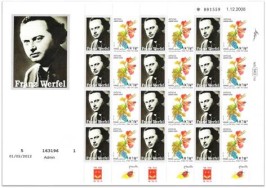The Warsaw Ghetto Uprising and The Forty Days of Musa Dagh
The International Raoul Wallenberg Foundation pays tribute to the heroes and martyrs of the Warsaw Ghetto Uprising and remembers the victims of the The revolt, which commenced 73 years ago, on April 19th, 1943 and lasted till May 16th, 1943, when the last pockets of resistance were crashed by the Nazis, was largely inspired by the example given by the Armenians in 1915.
As a direct result of the deportations, several Jewish undeground organizations created a self-defense combat unit known as the Jewish Combat Organization, or ZOB (based on its Polish name) headed by Mordecai Anielewich. The Revisionist Party (known as Betar) established another military organization, the Jewish Military Union, or ZZW.
Fighters from both groups joined forces in an attempt to oppose German attempts to destroy the Ghetto, a goal that the Nazis achieved 4 weeks later after facing heavy and heroic resistance.
Ten years earlier, the Austrian writer, Franz Werfel wrote “The Forty Days of Musa Dagh”, a novel based on true events that took place in 1915, at the outbreak of the Armenian Genocide. The novel deals with the self-defense of a small Armenian community near Musa Dagh, a mountain situated in the Ottoman Empire.
The IRWF has paid tribute to Franz Werfel, a hero of Armenia, and this included the commission of a commemorative stamp with his semblance, issued by the Israeli Postal Authority.
According to historical accounts and testimonies, Werfel’s book was very popular amongst the Warsaw Ghetto population, serving as an inspiration to their upcoming revolt.
This is not the only link between the Armenians and Jews, as illustrated by Dr. Harutyun Khachatryan, who saved the life of a Jew in the Holocaust and was officially recognized as Righteous among the Nations thanks to the research work carried out by the IRWF.
According to the IRWF Chairman, Eduardo Eurnekian: “It is our duty to keep alive the courageous legacy displayed by the rescuers and by all the heroic fighters who participated in the Warsaw Ghetto Uprising, very much inspired by the courageous Armenians who were persecuted three decades earlier. It is our mission to instill their exploits in the hearts and minds of the young generations”.

